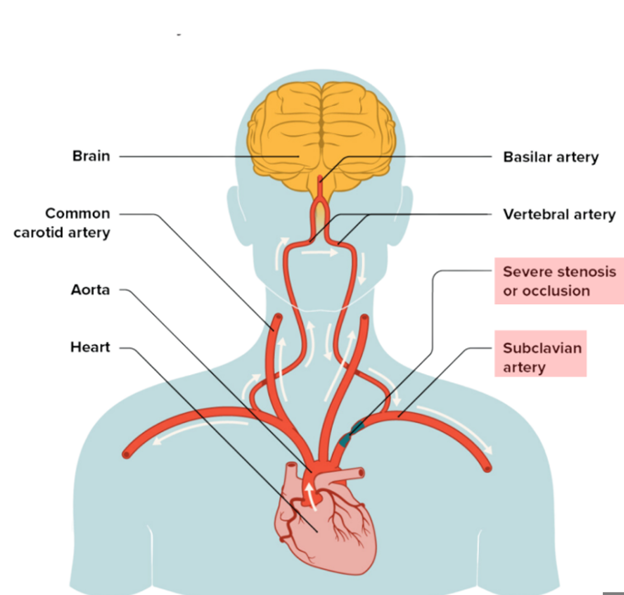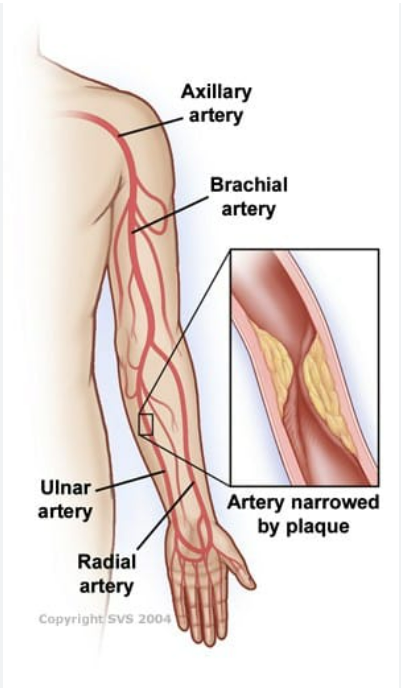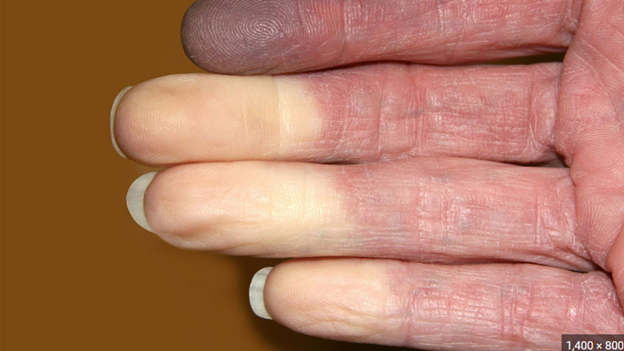What Is Upper Extremity Arterial Disease?
While peripheral artery disease (PAD) is more commonly associated with the legs, arteries in the arms can also develop blockages or abnormalities, leading to a range of symptoms that affect comfort, mobility, and vascular health.
Common arm artery conditions include:
- Subclavian artery stenosis or occlusion – causing arm fatigue, pain, or dizziness (subclavian steal syndrome)
- Brachial or axillary artery disease – leading to arm claudication (pain with use) or poor pulse
- Embolic occlusion – sudden loss of circulation to the hand or fingers
- Dialysis access steal syndrome – hand pain or ulcers caused by AV fistulas diverting blood from the hand

How We Diagnose Arm Artery Problems
Evaluation begins with a detailed history and physical exam, including:
- Pulse checks and arm-to-arm blood pressure comparison
- Functional assessment of hand perfusion
- Ultrasound or Doppler flow studies
- CT angiography for detailed imaging
- Catheter-based angiography, if intervention is planned
We carefully correlate symptoms with imaging to ensure accurate diagnosis and targeted treatment.
Traditional and Conservative Management Options
Depending on the condition, patients may be offered:
- Observation for mild, asymptomatic narrowing
- Lifestyle changes and risk factor control
Depending on the condition, patients may be offered:
How We Treat Upper Extremity Arterial Disease at Vascular Clinic
Endovascular and Surgical Options Tailored to You
When symptoms warrant treatment, we offer both minimally invasive and surgical solutions, depending on the cause and anatomy.
Angioplasty and Stenting (Minimally Invasive)
- Performed under local anesthesia and mild sedation
- A tiny catheter is inserted through the groin or arm
- Stents are placed if needed to keep the vessel open
- Treats conditions like subclavian stenosis or arm claudication
Surgical Bypass
- Used when endovascular treatment is not possible or has failed
- Routes blood around the blocked segment
- Reserved for more complex cases, such as complete subclavian occlusion
- Performed by our board-certified vascular surgeons
Thrombolysis or Embolectomy (For Acute Arm Clots)
- Catheter-directed clot-busting medications or surgical removal of emboli
- Restores sudden loss of circulation
Dialysis Access Steal Correction
- Revision of AV fistula or surgical bypass to improve hand blood flow while preserving dialysis access
What to Expect
- Most procedures are done outpatient or with a one-night hospital stay
- Local anesthesia, small puncture—no large incisions
- Return to light activity in 1–2 days
- Regular follow-up with pulse checks, ultrasound, and medication management
- For stents, you may be prescribed aspirin or antiplatelet therapy


Results and Safety

- High success rates for restoring blood flow with angioplasty and stents
- Immediate symptom relief in cases like subclavian steal
- Excellent long-term outcomes when risk factors are well managed
- Ongoing monitoring ensures durability of treatment
Frequently Asked Questions
What is subclavian steal syndrome?
It occurs when a subclavian artery blockage diverts blood from the brain to the arm during activity, causing dizziness or arm pain. A stent can eliminate this “steal” phenomenon.
Can you treat dialysis access steal without losing the fistula?
Yes. We can rebalance blood flow to the hand while preserving your AV access—through banding or revision.
Will I need surgery for my arm artery disease?
In most cases, no. We begin with less invasive options like angioplasty. Surgery is reserved for very select situations.
What about finger color changes in cold weather?
That’s often Raynaud’s phenomenon, a vascular spasm issue. We treat it medically, often with medication and lifestyle strategies.
Why Choose Vascular Clinic?
- Advanced Imaging and Vascular Diagnostics
- Minimally Invasive Therapies Performed by Board-Certified Specialists
- Expertise in Rare and Complex Arm Artery Conditions
- Compassionate Patient Education with Clear Explanations and Visual Aids
- Holistic Approach—we manage your whole vascular health, not just a single artery




